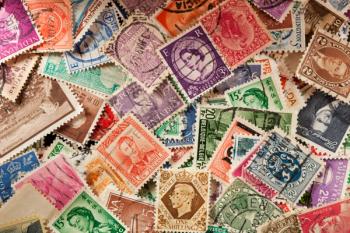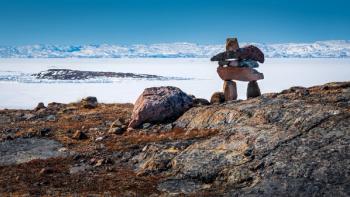
XRF Analysis of Cultural Heritage Materials
Works of art often consist of multiple layers and can require several complementary techniques for complete analysis, and invasive sample preparation procedures and analysis techniques are not good choices. This interview with Dr. Karen Trentelman of the Getty Conservation Institute (GCI) in Los Angeles, California, discusses her research with X-ray fluorescence (XRF) spectroscopy for the study of cultural heritage materials such as paintings, sculptures, and illuminated manuscripts.
XRF Analysis of Cultural Heritage Materials
Works of art often consist of multiple layers and can require several complementary techniques for complete analysis, and invasive sample preparation procedures and analysis techniques are not good choices. This interview with Dr. Karen Trentelman of the Getty Conservation Institute (GCI) in Los Angeles, California, discusses her research with X-ray fluorescence (XRF) spectroscopy for the study of cultural heritage materials such as paintings, sculptures, and illuminated manuscripts.
Your presentation at the 2014 Denver X-ray Conference (1) discussed your research using XRF to analyze a variety of works of art, including paint layers in oil paintings, manuscript illuminations, and other cultural heritage items. What are the advantages of using XRF over other analytical techniques with these objects?
XRF is widely used in the study of cultural heritage materials, largely because of its ability to provide information about the elemental composition of the object without having to remove any sample for analysis. The development of handheld XRF spectrometers about a decade ago also widely expanded the use of this technique in the study of cultural heritage materials, because now the instrument could be taken to the art, instead of having to move the art to the instrument. The instruments also became more affordable, which made XRF accessible to a larger number of institutions. With the recent development of macro-XRF scanning, which can provide elemental maps over entire paintings, you get the added advantage of combining the elemental data with the power of imaging, which allows hidden layers to be visualized, or relationships between different components to be discovered.
While XRF — either as point analysis or as large-scale XRF-maps — can provide a considerable amount of data about a work of art, it doesn’t provide everything that we might wish to know. The pigment present can sometimes be inferred from the elements detected (for example, the detection of Hg in a red area can be fairly confidently attributed to the presence of the pigment vermilion, HgS). However, the exact form of the pigment in an area that, for example, was identified as containing copper (which is found in a number of different pigments) must be determined using a complementary technique such as Raman spectroscopy, Fourier transform infrared (FT-IR) spectroscopy, or X-ray diffraction (XRD) analysis. Likewise, the identification of organic materials — whether as pigments or as the binding media — cannot be accomplished by XRF, and again, complementary techniques, such as FT-IR or gas chromatography–mass spectrometry (GC–MS), must be employed. These techniques generally, but not always, require the removal of a sample, and as such, are typically employed after the noninvasive techniques.
What are the greatest challenges you have faced in analyzing cultural heritage items?
The challenges faced in the analysis of cultural heritage objects are as diverse as the objects themselves. Sometimes it’s a matter of geometry — for example, trying to analyze material in a deep crevice that may be the only remnant of original paint on a sculpture. Sometimes it’s a matter of geography — for example, having to climb a ladder and hold a handheld instrument to look at the pigments in a wall painting. And sometimes it’s a matter of time — for example, if the object can only be off view for a limited period of time or if you only have once chance to do the analysis. These challenges in collecting the data are, as I mentioned earlier, getting easier because of the increased availability of handheld instrumentation (not just for XRF, but for other spectroscopy techniques as well).
However, the greater ease of collecting data has led to another challenge: the interpretation of increasing quantities of data. Ideally, we would like to integrate all the different types of data collected about an object — not just all the XRF data, but all the spectroscopic, imaging, or organic analysis as well — in a way that they can be considered together, to provide a more complete understanding of the object. This is something that we have recently begun working toward recently at the GCI, with a goal of developing software solutions that will facilitate the sharing, interrogating, and interpretation of large data sets.
How have you implemented handheld instruments in your research, and what are their limitations compared with laboratory instruments for your applications?
As I mentioned above, handheld instruments have had a major impact on the study of cultural heritage objects, since they allow the instruments to be taken to the object, which is always safer for the work of art, which of course is our primary concern. For some artifacts, for example wall paintings at archaeological sites, handheld instruments may be the only means of performing an analysis. However, as with most things, there is a tradeoff: with increased flexibility comes some loss of performance, although technological developments are continuing to close the gap.
Do you anticipate further developments in XRF instrumentation that will benefit your research? What developments would you like to see?
Technology is advancing all the time, and I expect analytical technologies to continue to get smaller, with greater functionality, which will be of tremendous use for the study of cultural heritage materials. In particular, I would like to see the integration of XRF with other data types — such as Raman, XRD or other complementary techniques — so that more complete, and intrinsically correlated data sets may be generated. The power of integrating data has been shown by the macro-XRF scanning, which generates maps (images) of the element distributions. Not only does this provide a means of determining correlations and connections between parts of the objects, but it has proven to be an incredibly efficient means of communicating scientific information, and stimulating discussion with, a diverse group of stakeholders, including scientists, art historians, and conservators.
What are the next steps in your research?
My research generally revolves around the technical study of works of art to address questions of how, when, and by whom the objects were made, how the materials may have changed over time, and what steps we might take to conserve them. As such, I tend to develop specific projects in response to questions raised by the curators or conservators regarding the conservation or interpretation of works of art, and as such, it changes all the time. I’m a firm believer in serendipity – taking advantage of opportunities when they present themselves. And in the study of cultural heritage materials, opportunities present themselves all the time – it’s just a matter of choosing an interesting thread to follow.
Currently, the threads relating to the use of XRF for the study of cultural heritage currently are focusing on the use – and interpretation – of macro-XRF scans to reveal information about artists materials and techniques used in the creation of paintings, drawings and manuscript illuminations. In addition, because of the increasing use of handheld XRF spectrometers in this field, we are also working to develop workshops and teaching materials to help people who may not have a strong background in science become informed users of this method.
Reference
(1) K. Trentelman, “The Use of XRF in Cultural Heritage: Special Considerations for Special Objects,” presented at the 2014 Denver X-ray Conference.
Newsletter
Get essential updates on the latest spectroscopy technologies, regulatory standards, and best practices—subscribe today to Spectroscopy.




